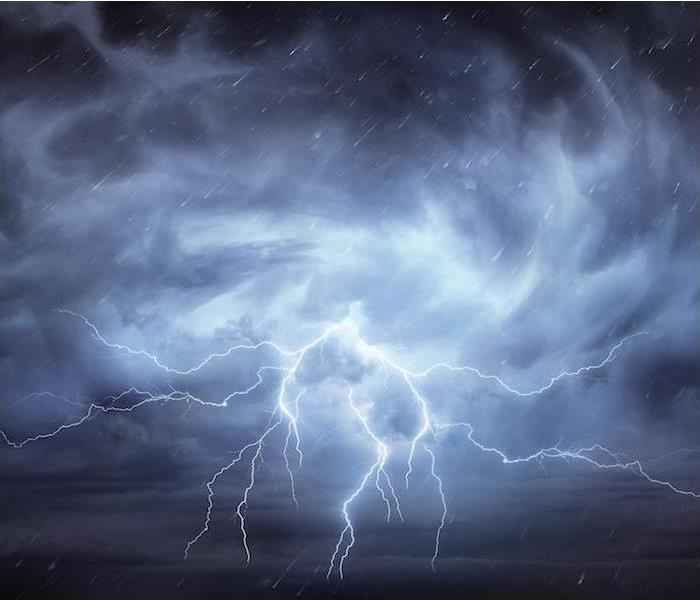It’s Time to Prepare for Spring Storms
4/16/2019 (Permalink)
Spring is here! That means that, even though we are enjoying warmer weather, we also must now prepare for whatever Mother Nature may choose to send our way.
With the arrival of spring comes longer days and more sunshine, but it also brings the threat of severe weather throughout the country. It’s a toss-up this time of year, meaning the weather may change at moment’s notice.
Unstable temperatures are the cause of the changing weather, with temps that can go from warm to cold even in the same day. That temperature change can result in extreme weather changes as well.
Thunderstorms become more common during the spring and are the main cause of severe weather. A thunderstorm will occur whenever warm, moist air collides with cool, dry air, a common occurrence in the spring and summer.
In taking a look at natural catastrophe losses in the U.S. for 2017, severe thunderstorms were the most common and produced some of the costliest results. Out of 50 events, there were 85 fatalities and an estimated total of $25.4 billion in overall losses.
With these storms comes the threat of flooding, high winds and even tornadoes if the conditions are right. It has been found that in modern history, 10% of all violent tornadoes have occurred in March, with April, May and June taking the top spots at 30%, 24% and 15% respectively.
Weather forecasters are not able to predict the weather with 100% accuracy, but fortunately, they do have the technology available to at least give us an idea of severe weather that could be coming. Advanced warnings, along with the right preparation, can greatly improve overall safety for your family.
Here are some things you can do to your home to prepare for the chance of severe weather:
- Clear out your home’s gutters, drains and downspouts.
- Trim trees of precarious limbs or branches that could break off in a storm.
- Secure or store outdoor belongings if severe weather is in the forecast.
Having an emergency kit on hand is always advised. These kits should include the following:
- Battery-operated flashlight and NOAA weather radio, with extra batteries for both
- Emergency evacuation or shelter plans
- Important personal info, like telephone numbers of neighbors, family and friends, insurance and property info, numbers for the utility companies, and medical info
- A first-aid kit with things like non-latex gloves, adhesive bandages, tweezers, sterile gauze pads, aspirin packets, adhesive cloth tape and scissors
- 3–5 day supply of bottled water and nonperishable food
- Personal hygiene items
- Blankets or sleeping bag
Despite its unpredictability, there is one thing that always remains true of the spring weather season: It always happens. If your home or business is damaged in a storm, you can depend on SERVPRO® of Central Union County to get the cleanup and restoration process started fast.






 24/7 Emergency Service
24/7 Emergency Service